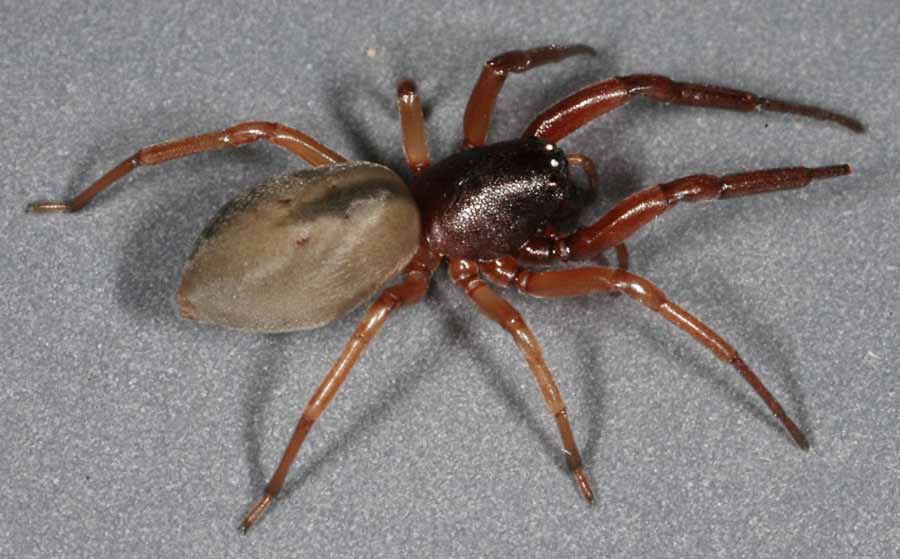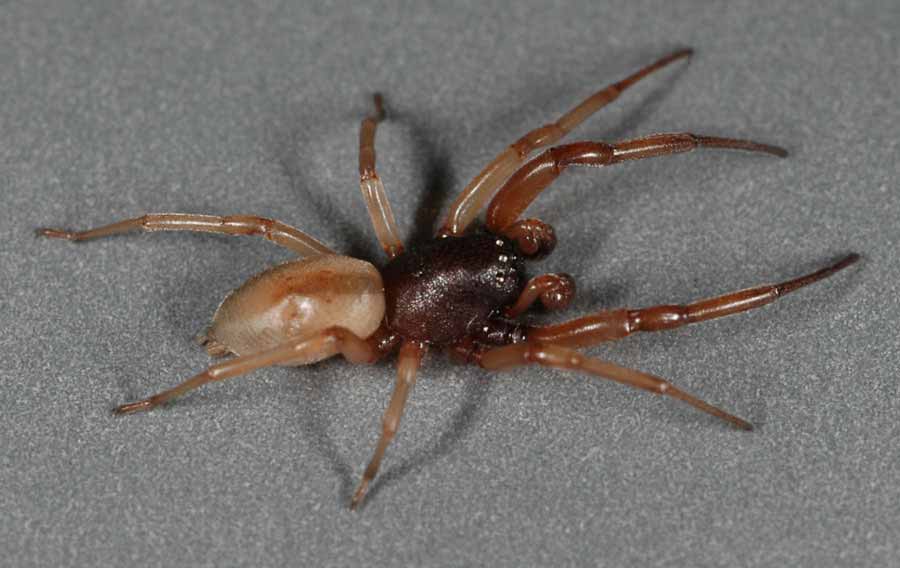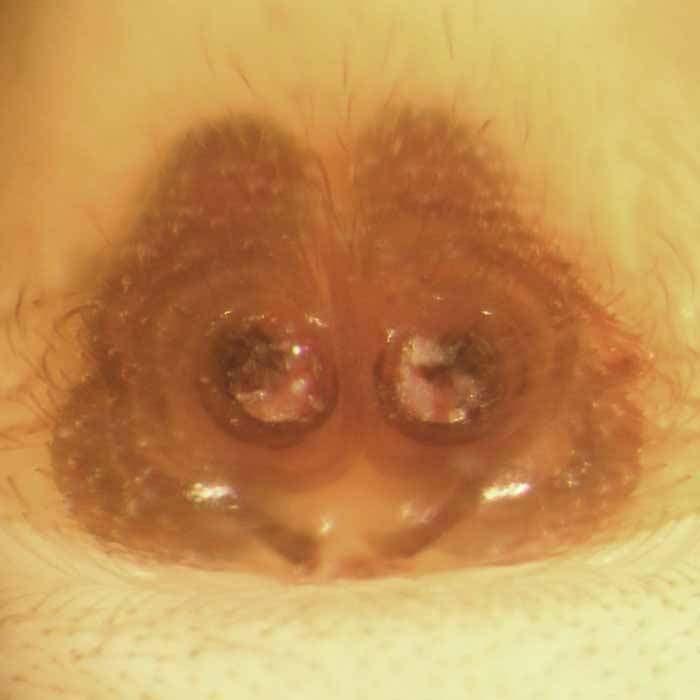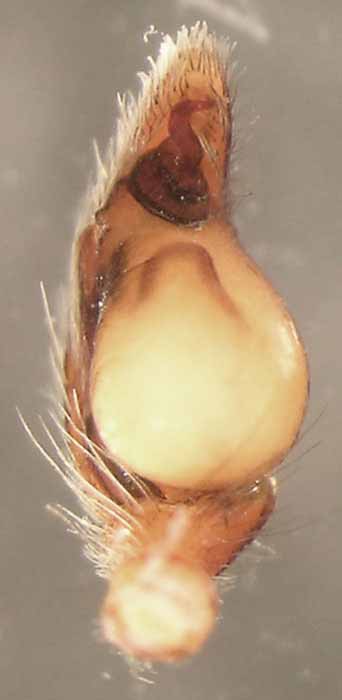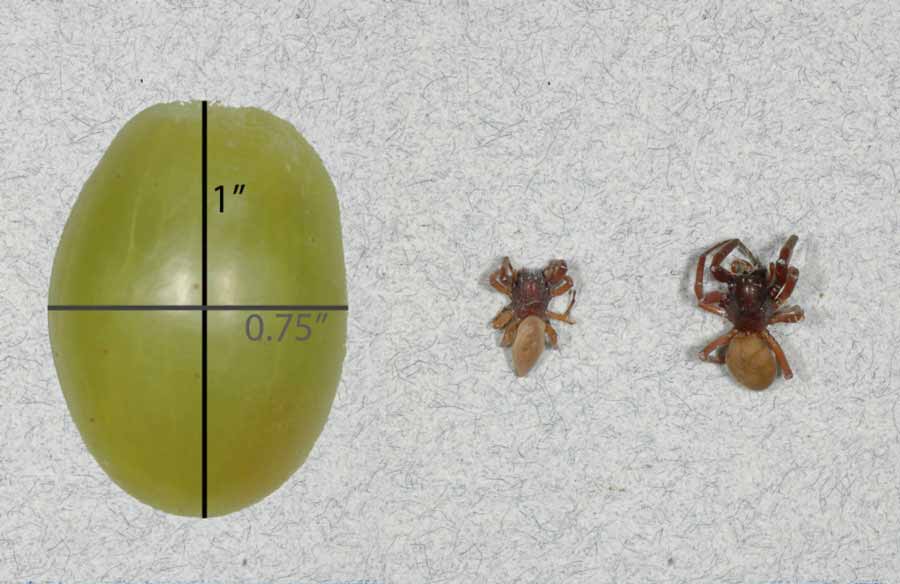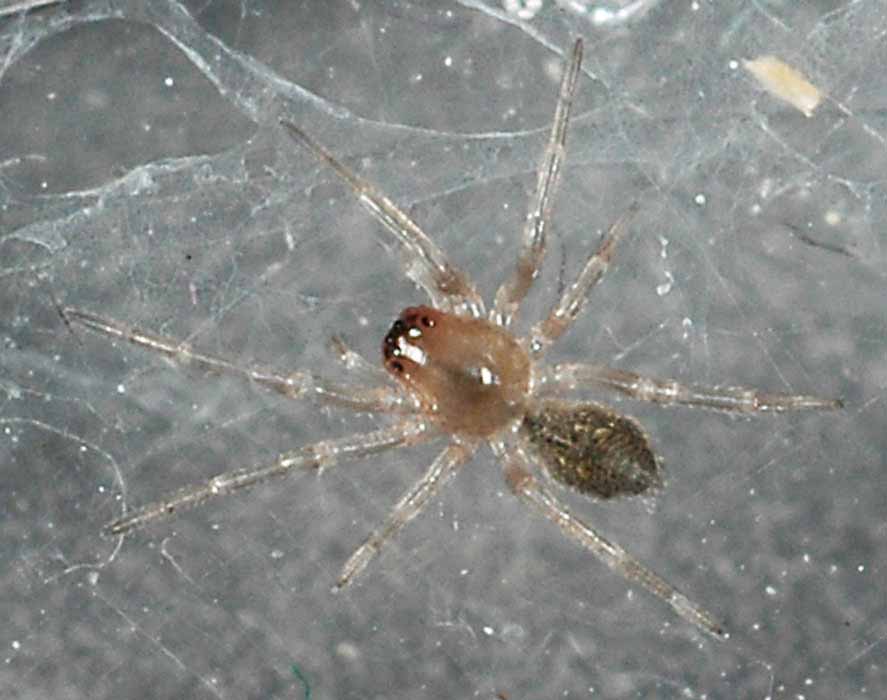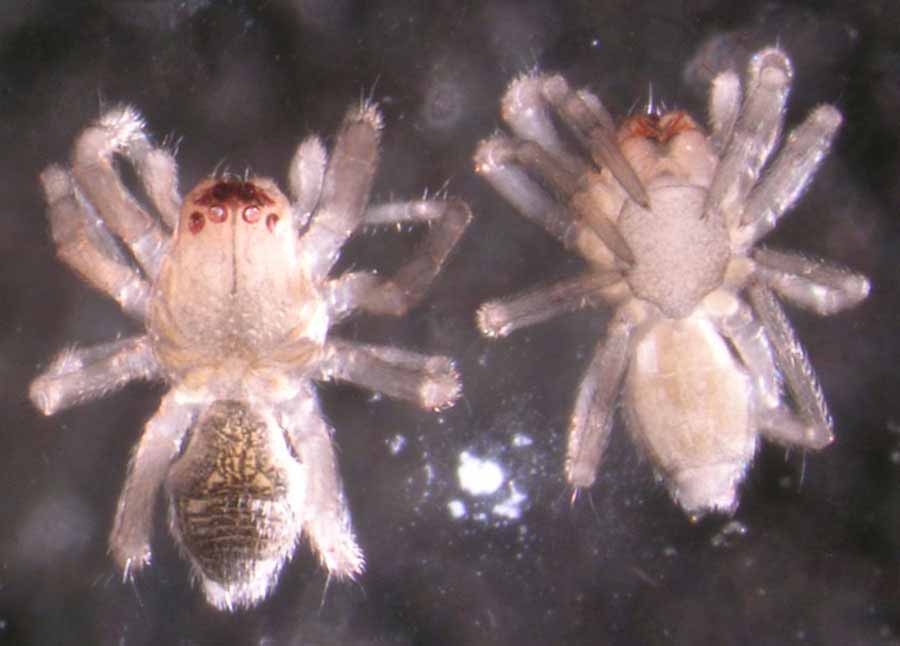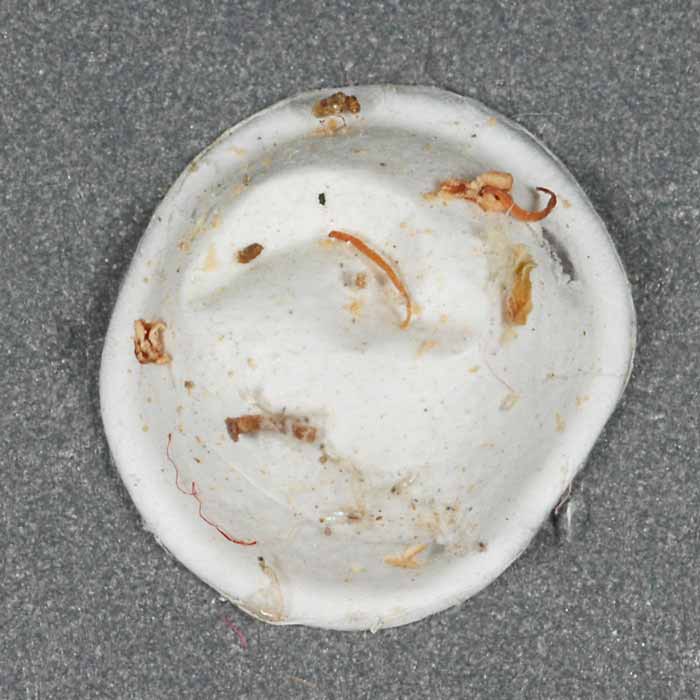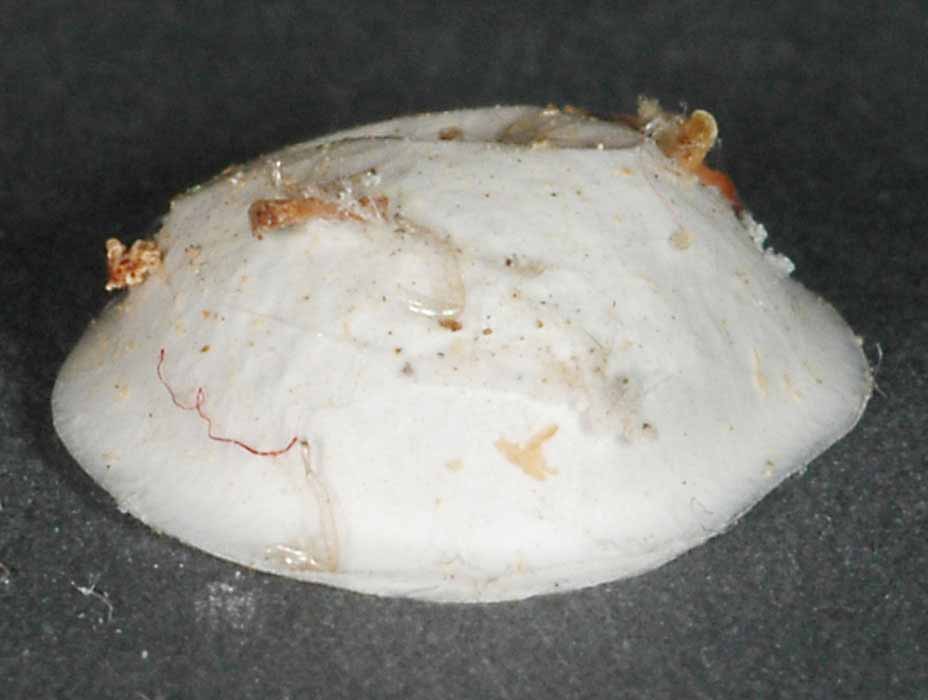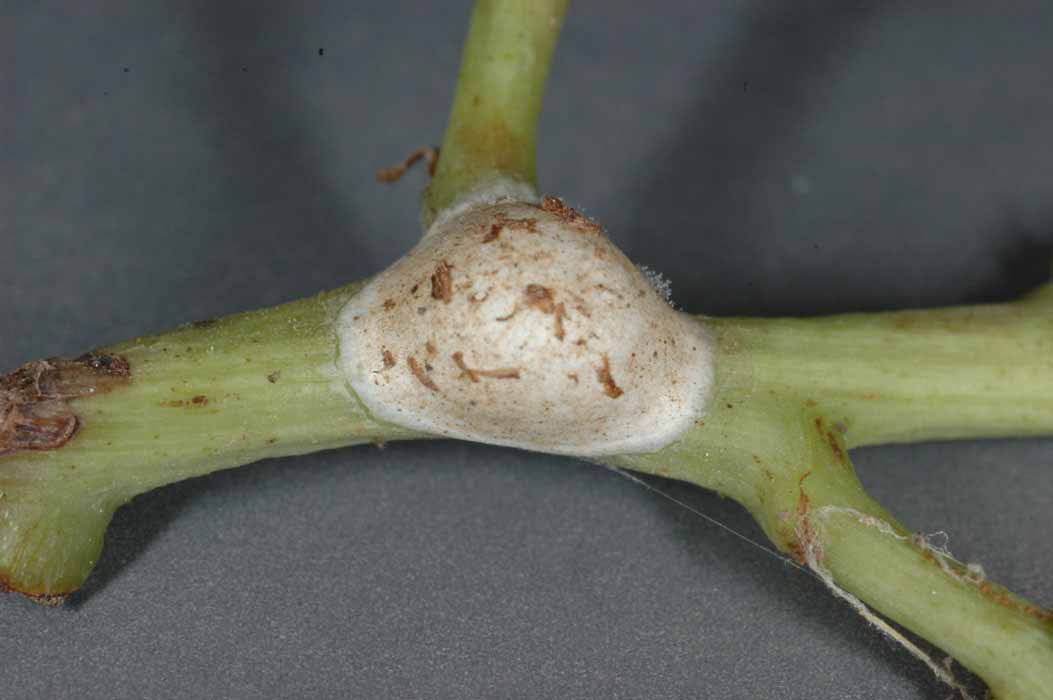Trachelas pacificus
|
adult female, live; body coloration is a diagnostic feature |
|
adult male, live |
|
female genitalia; epigynum |
|
male genitalia; palp, lateral |
|
male genitalia; palp, ventral view |
|
grape size comparison with adult spiders; male (left), female (right) |
|
spiderling, live |
|
spiderlings, dead; dorsal (left), ventral (right) |
|
egg sac, top view |
|
egg sac, lateral view |
|
egg sac on stem |
|
egg sac with scale |
Current valid name
Trachelas pacificus Chamberlin & Ivie (family Corinnidae)
Recognition and diagnostic features
Wandering hunter, cephalothorax dark magenta color, abdomen tan, eyes with large distance between each other and arranged in two relatively straight rows.
Spider
Body lengths when mature: male: 5.98 ± 0.59 mm, female: 6.86 ± 0.82 mm
Immatures resemble miniature adults.
Egg sac
Description: flat-bottomed dome sac, pure white papery silk with conspicuous flat brim around the circumference which is almost circular, sometimes with vegetative detritus added for camouflage, 7.46 ± 1.7 mm wide, 8.74 ± 0.80 mm long
Number of eggs per sac: 26.0 ± 11.43
Size of egg: 0.99 ± 0.041 mm
Distribution
In California: throughout most of the state except northernmost counties
Elsewhere: northern Baja California
Native to North America
This species has not been transported or become established outside of its range.
Biology
Nocturnal and wandering hunter. Found more often in grape canopy than on ground. Occasionally lays egg sacs in grapes. Often found in homes.
Status in table grapes
Level of Incidence: very common
Level of Concern in New Zealand: WPNZ (May 2010) nr, BORIC (Dec 2011) nr (not listed), MAF-BPRA (2002) nr (coding definition)
Level of Concern in Australia: WPAU (2006) nr (coding definition)
Level of Medical importance: minor, large enough that it can penetrate skin but venom is not especially toxic, there are published reports of bites from eastern species
Common name
None
Taxonomic history
Trachelas was recently transferred from the Clubionidae to the Corinnidae.
Selected references
Costello, M. J., and K. M. Daane. 2003. Spider and leafhopper (Erythroneura spp.) response to vineyard ground cover. Environ. Entomol. 32: 1085-1098.
Platnick, N. I. 1997. Two reports of envenomation by the spider Trachelas tranquillus (Hentz). Cincinnati J. Med 52: 194.
Platnick, N. I., and M. U. Shadab. 1974. A revision of the tranquillus and specious groups of the spider genus Trachelas (Araneae, Clubionidae) in North and Central America. Amer. Mus. Novit. #2553, 34 pp.
Uetz, G. W. 1974. Envenomation by the spider Trachelas tranquillus (Araneae: Clubionidae). J. Med. Entomol. 10: 227.

